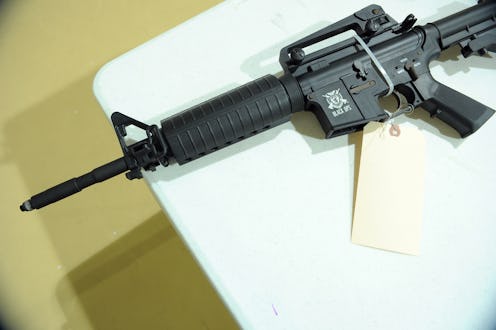Entertainment
Is PG-13 Even More Violent Than R-rated?
In today's Horrifying Statistic of the World: A study published on Monday, the journal Pediatrics found that PG-13 rated films had higher instances of gun violence than any other rating. Films that are geared towards teenagers have more shots fired than in any other demographic. The numbers are staggering: Researchers pulled from the 30 highest-ranking films of each year from 1950-2012, 945 films in total. Each was scanned with trained coders to detect violence in 5-minute sequences. 17,695 totoal sequences of gun violence were detected. The researchers then honed in on films released after 1985, when the PG-13 rating was introduced, and for the love of all of us, 94% of all of those films included at least one sequence of gun violence. That basically means nearly all of the highest-grossing films made for teenagers have gun violence.
It's no shocker that violence in Hollywood has continued to increase over the years. Can you name more than one or two big blockbusters that don't involve guns, lasers, or violent chase scenes? The results of the study were still alarming, despite our over-saturation. Violence in films has doubled since 1950 and in films rated PG-13, the violence has tripled since 1985. In 2012, there was an average of 2.5 dramatic scenes of gun violence and gun-related deaths per hour in films rated PG-13. We all knew Hollywood used guns to sell tickets, but this is just excessive and completely worrying. No other rating (G, PG, or even R) has seen an increase in gun violence except for PG-13.
Stated in the conclusion of the study by researchers at the University of Pennsylvania, Ohio State University, and VU UNiversity Amsterdam,
Even if youth do not use guns, these findings suggest that they are exposed to increasing gun violence in top-selling films. By including guns in violent scenes, film producers may be strengthening the weapons effect and providing youth with scripts for using guns. These findings are concerning because many scientific studies have shown that violent films can increase aggression. Violent films are also now easily accessible to youth (eg, on the Internet and cable). This research suggests that the presence of weapons in films might amplify the effects of violent films on aggression.
We'd like to think that such findings would wake up and shake up the responsibility of film-makers and production companies. However, the trend in box-office draw continues to be bigger and louder for younger and younger.
